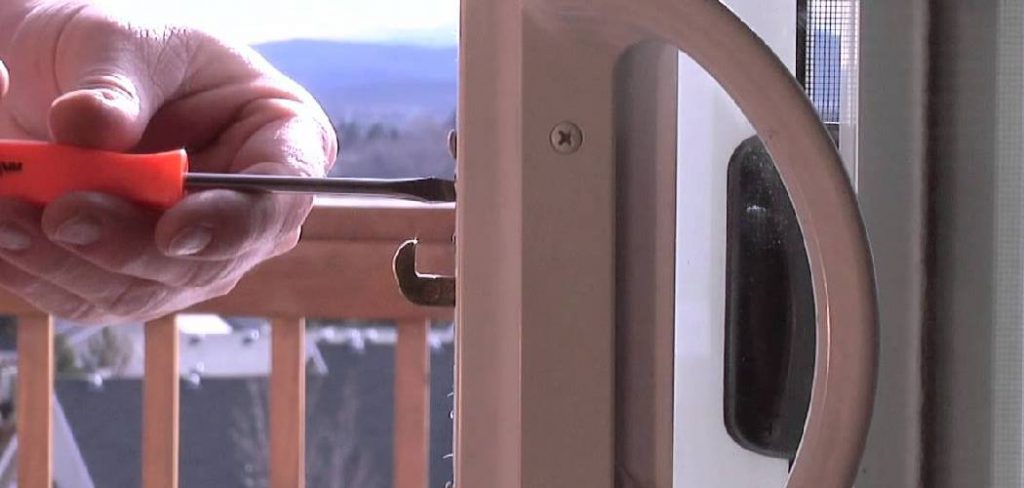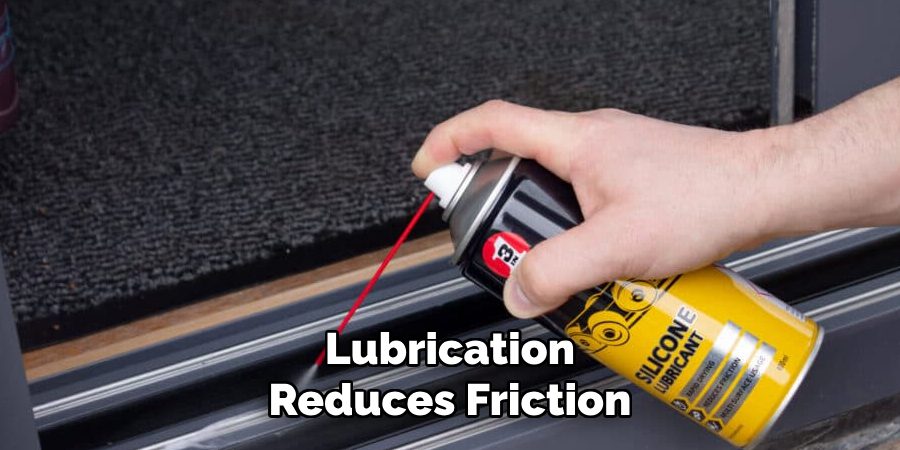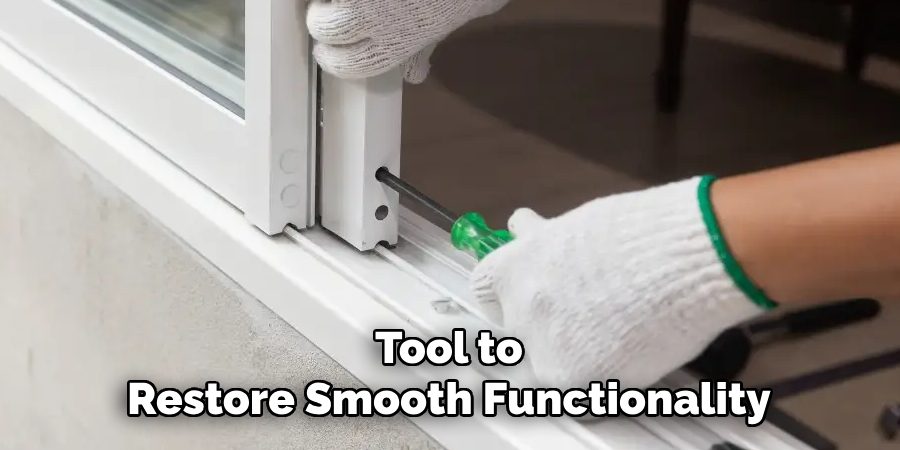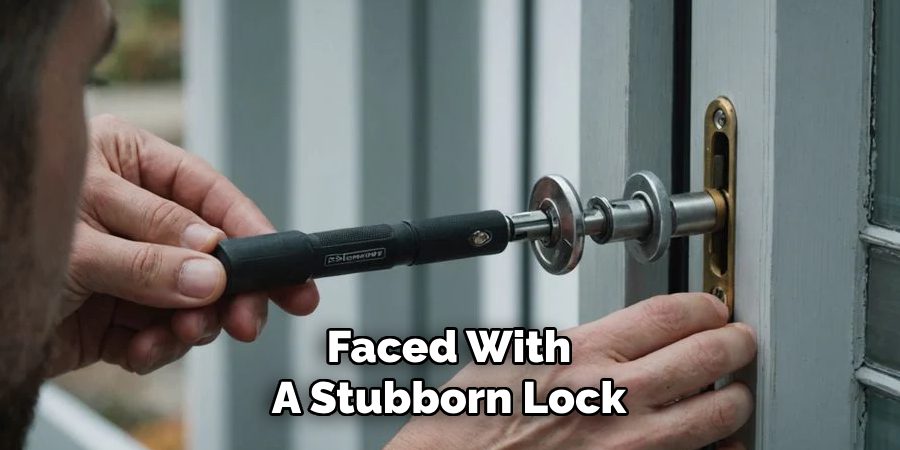Patio doors are popular in many homes, offering easy access to outdoor spaces and enhancing natural light. However, they can occasionally present challenges when it comes to unlocking, often due to stuck locks, misaligned mechanisms, or worn components. Encountering such issues disrupts the convenience of using the door and can lead to damage if improper methods are used to address them.
Understanding how to unlock a patio door efficiently is essential for maintaining the security and functionality of the locking system. Proper techniques help avoid further wear or costly repairs while ensuring safe and smooth operation.
This guide is designed to provide comprehensive, step-by-step instructions on how to unlock a patio door. Whether you’re dealing with sliding or French patio doors, the following sections cover common problems, effective unlocking methods, and maintenance tips to keep your patio doors in excellent condition.

Types of Patio Door Locks
Standard Sliding Patio Door Locks
Standard sliding patio door locks are traditional latch locks that engage automatically when the door is closed. These locks are widely used and are appreciated for their simplicity and ease of operation. However, they can encounter common issues such as misalignment, dirt buildup, or general wear and tear over time.
Misaligned locks may prevent proper engagement, while dirt and debris can obstruct the locking mechanism, making it difficult to secure or unlock the door effectively. Regular cleaning and inspection can help mitigate these problems.
Keyed Locks for Sliding Doors
Keyed locks for sliding patio doors provide an added layer of security by requiring a key for operation. These locks are ideal for homeowners seeking enhanced protection against unauthorized entry.
Despite their benefits, they can experience issues such as keys getting stuck in the lock or jamming caused by internal corrosion. These problems often result from exposure to moisture or infrequent use. To maintain functionality, it is advisable to lubricate keyed locks periodically and address any signs of rust or wear immediately.
French Doors
French doors, a popular style for patio entrances, utilize locking mechanisms located at the center or on the handle. These double doors create an elegant aesthetic but can face unique challenges, including misaligned components, broken or faulty deadbolts, and malfunctioning handles.
Proper installation and routine checks of the locking hardware can prevent these issues. Addressing minor faults promptly ensures French patio doors’ continued smooth operation and security.

Tools and Materials Needed
When addressing lock issues, having the right tools and materials on hand is essential for effective repairs and maintenance. Below is a breakdown of the recommended items for different door types:
For Sliding Doors
- Flathead Screwdriver: Useful for adjusting or removing components of the sliding door mechanism.
- Lubricant (Wd-40 or Graphite Powder): To reduce friction and ensure smoother operation of the locks and tracks.
- Cleaning Cloth: Ideal for wiping dirt, debris, or excess lubricant from the tracks and lock components.
For French Doors
- Phillips Screwdriver: Required for tightening or replacing screws on handles and locking mechanisms.
- Pliers (if Needed): Helpful for removing damaged components or making minor adjustments.
- Key or Spare Key: Necessary to test functionality or address lock-related problems.
For Stubborn Locks
- Penetrating Oil or Lock De-icer: Effective in loosening jammed mechanisms or frozen components.
- Small Wire or Hook: Useful for emergency unlocking or carefully clearing debris from the lock.
Safety Gear
- Gloves: Protect your hands while working with potentially sharp or broken hardware and chemical products like lubricants or de-icers.
Proper preparation with these tools ensures smoother, safer repairs and maintenance.
Preparing the Door for Unlocking
Step 1: Examine the Door Mechanism
Begin by carefully inspecting the door to identify the root cause of the issue. Check if the door is misaligned, which could be causing it to stick, or if the lock is jammed due to internal or external reasons. Look for visible signs of problems, such as dirt or debris buildup, rusted components, or warped hinges. Observing uneven gaps between the door and its frame often detects misalignment.
Step 2: Clear Away Obstructions
Once you have identified potential issues, eliminate any obstructions that might be interfering with the door’s functionality. Use a cleaning cloth or a small brush to gently remove dirt, debris, or dust from the tracks and lock mechanism. Be thorough, ensuring there are no particles left that could block the door’s movement or prevent the lock from turning smoothly. If debris is deeply lodged, use a small wire or hook to clear it away carefully.
Step 3: Lubricating the Lock and Mechanism
To further address the problem, apply a small amount of lubricant to the lock cylinder and the moving components of the mechanism, such as hinges or sliding tracks. Lubrication reduces friction and helps loosen any stuck parts. After applying the lubricant, allow it to soak in for a few minutes before attempting to operate the lock again. This extra step can make a significant difference in ensuring the door unlocks smoothly.

How to Unlock a Patio Door: Unlocking a Sliding Patio Door
Step 1: Engaging the Locking Mechanism
Begin by identifying the type of lock on the sliding door. Standard options include a latch lock, a keyed lock, or a security bar. If the door has a latch lock, gently lift or pull the door while pressing the latch to release it. This slight adjustment can help align the mechanism and make it easier to disengage. Be careful not to apply excessive force, as this could damage the lock or door frame.
Step 2: Using the Key (If Applicable)
If the sliding door lock operates with a key, insert it into it and turn it gently. Please don’t force the key, as undue pressure could break it within the lock. If the key feels stuck or the lock doesn’t respond, apply a small amount of penetrating oil to the keyhole to loosen any internal obstructions. After applying the oil, gently wiggle the key back and forth to release the lock. Patience is key during this step to prevent damage to the lock mechanism.
Step 3: Troubleshooting a Stuck Sliding Lock
If the sliding door remains stuck, it’s time to investigate potential lock or door alignment issues. Inspect for misalignment between the lock components, which can happen due to wear or improper installation. Use a flathead screwdriver to nudge the misaligned parts back into place carefully.
Additionally, examine the tracks for debris, such as dirt, grime, or small objects that may obstruct the lock. Clear away any obstructions using a small brush or tool to restore smooth functionality. Follow these steps systematically to regain easy access without causing harm to the door or its locking mechanism.

Dealing with Stubborn or Broken Locks
When faced with a stubborn or broken lock, you can try a few methods to resolve the issue without causing further damage.
When the Lock Won’t Open
If the lock is frozen or jammed, apply a lock de-icer or penetrating oil directly to the locking mechanism. Allow the solution a few minutes to penetrate and loosen any internal blockages. If the lock components are slightly misaligned, use a pair of pliers to manipulate the mechanism back into alignment gently. Ensure that you proceed carefully to avoid excessive force, which could worsen the problem.
When the Key is Stuck
If the key becomes stuck in the lock, resist the urge to force it, as this can lead to a broken key or internal damage. Instead, apply a small amount of graphite powder to the keyhole. Insert and gently jiggle the key to encourage movement. If the key breaks inside the lock, retrieve the broken piece or a small hook designed for this purpose. These measures can help restore functionality while minimizing the risk of permanent damage to the locking system.
Preventative Maintenance and Care
Regular maintenance is essential for ensuring the longevity and functionality of locking mechanisms.
Regular Cleaning and Lubrication
To prevent the buildup of dirt and grime, clean the sliding tracks and lock systems regularly using a soft brush or cloth. Applying a high-quality lubricant to the locks and mechanisms every six months will keep them operating smoothly and reduce wear over time.
Addressing Alignment Issues
Misalignment can lead to operational difficulties if left unchecked. Periodically inspect the door and lock alignment and make any necessary adjustments to ensure a proper fit. This proactive approach can prevent costly repairs and avoid prolonged system malfunctioning.
Replacing Faulty Locks
If a lock has become significantly damaged or worn out, replacing it with a new one is best. Upgrading to a reliable locking system enhances ease of use and contributes to greater security and peace of mind.

Conclusion
Understanding how to unlock a patio door, whether it is a sliding or French design, is crucial for maintaining security and functionality. Homeowners can avoid unnecessary complications by employing proper unlocking techniques and addressing issues like misalignment or dirt buildup.
Regular maintenance, including cleaning, lubrication, and inspections, plays a vital role in preventing future locking problems and prolonging the lifespan of the mechanism. When faced with a stubborn lock, patience and care are essential to avoid causing further damage. Consistent attention to the door’s condition ensures smooth operation and lasting peace of mind for years to come.

Professional Focus
Oliver Wood, a passionate patio designer, specializes in creating comfortable and inviting outdoor spaces that enhance relaxation and entertainment. His work combines a deep understanding of design with a love for nature, making him a standout professional in the field of outdoor living spaces. Through his thoughtful approach, he transforms everyday patios into extraordinary retreats for family and friends.
About the Author
Oliver Wood, a skilled patio designer, shares his expertise on outdoor living through his designs and insights. With a background in patio design and a genuine passion for creating beautiful spaces, he encourages others to invest in their outdoor environments, enhancing their homes with functional and inviting spaces for relaxation and entertainment.
Education History
University: Virginia Union University
Oliver’s education equipped him with the knowledge and skills to design patios that merge aesthetics with comfort, transforming outdoor areas into beautiful extensions of the home.
Expertise:
- Patio Design and Outdoor Living Spaces
- Functional and Aesthetic Landscaping
- Comfortable and Inviting Outdoor Environments
- Design Philosophy for Family-Oriented Spaces
- Creating Spaces for Relaxation and Entertainment
